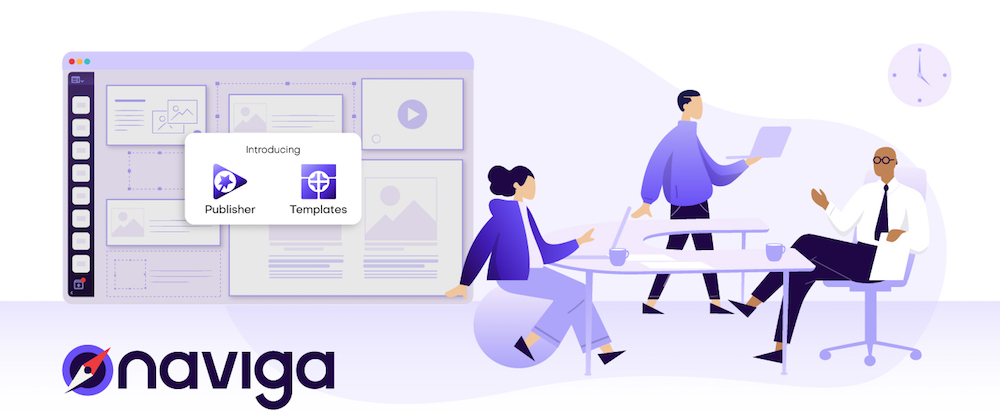How artificial intelligence and machine learning power content-first newsrooms

By Chris Nguyen, executive vice president, marketing at Naviga
Digital is no longer just a nice addition to a newspaper’s success, but an imperative. While print remains a key source of revenue — capturing both subscriptions and advertising — spending too much time on designing and managing printed editions has become an obstacle to digital transformation.
While technology has evolved, allowing newspapers to serve up digital content personalized to the subscriber and offering customer portals to boost subscriptions, the same can’t be said for the print side of newspaper businesses. Organizations are still having to manage and allocate resources toward task-heavy print processes instead of focusing on digitally transforming their business models.
And so, as the move to digital accelerates, there are some critical steps that can be taken to help close the print and digital divide.
Enabling content-first newsrooms means changing print workflows
According to a survey conducted by Naviga in 2020, approximately 30 percent of all newsroom resources are dedicated to the print newspaper manufacturing process. That’s a third of all resources tethered to delivering a physical paper. Digging further into that statistic, most of the process involved is typically tied to the copy and layout changes needed to adhere to the look and feel of the paper — the branding of the publication, the way the ads are reconciled and placed against articles, even down to the titles and amount of white space throughout the pages. All of this is critically examined by several if not dozens of people each day in every newsroom across the globe.
That’s a staggering amount of resources, bearing in mind that most of the focus and attention should be on the actual journalistic reporting that truly differentiates one publisher over another. People subscribe to their favorite publications for the reporting and quality of information. And the publications that win are the ones putting the most focus and mindset into being content-first.
In order to complete the move to digital, however, newsroom resources can no longer be tied so tightly to manual print manufacturing workflows. Publishers that can drive efficiencies at scale while reallocating resources from their print workflows to content generation will be able to evolve into truly content-first organizations without having to focus on any particular channel — giving them the opportunity to create better content, speed up content production and work on incorporating enrichments and metadata that will help attract and retain digital subscribers.
Automation lightens print workloads
Purpose-built digital content tools for newsrooms have made the process for putting together digital content close to seamless. But the workflow for creating a print newspaper still involves expensive, time- and labor-intensive manual processes for analyzing articles, measuring copy, examining column lengths, editing content for length, placing content with ads that contextually make sense and adjusting and readjusting the final design.
Artificial intelligence and machine learning solutions can bridge the gap, helping content flow automatically into the different formats for print, online and mobile — using less time, money and people power.
This new technology allows journalists to write articles in a channel-agnostic way, rather than writing to fit column inches. Journalists can focus on writing rich stories that will attract readers, adding a teaser up top or going long on a particularly compelling story. The journalist can also work in all the keywords a reader might search, without having to leave any out for space considerations. Once the writers turn in their copy, the editors can choose and prioritize the stories that will run in the printed edition. From there, the AI model gets to work, from testing out various layout possibilities and calculating the best fit and generating camera-ready pages.
Reallocating resources from print to content
Many readers look to websites and apps for their news, but print is still an important part of newspapers’ brands. Automated solutions that incorporate artificial intelligence and machine learning can help news brands achieve the following:
- Journalists can focus on writing excellent content, without worrying about constraining the word count to fit a print layout.
- Channel-neutral content can flow as easily into the print paper — or e-reader — as it can onto a website or into an app.
- Subscribers get the benefit of reading full, rich stories and editors get the benefit of not having to cut stories for length.
- Newsrooms can save hours — or days — of people power and use the newly opened time in a more strategic way.
- Newsrooms can use the money they save with automation to create even more content.
Newspapers are starting to onboard automation to realize all the benefits it has to offer, as in the examples above. In fact, at least 22 percent of publishers surveyed are already considering using print automation technology, alleviating time-intensive print manufacturing workflows for newsrooms.
More from Digiday

‘JG believed that even in a demanding industry, it was possible to lead with both rigor and humanity’
The industry pays respects to OpenX CEO John Gentry, who sadly passed away last week.

Beverage brands update Dry January marketing based on changing consumer habits
Today, people generally seek balance when pursuing their personalized wellness goals in a new year.

Future of Marketing Briefing: X claims an ad comeback, reality proves out a different thesis
The comeback story X wants told, and the ad business it actually has.





